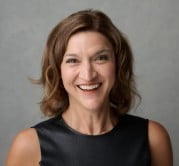Are your humans connecting the dots?

Earlier this month, Geezeo announced the sale of their company to Jack Henry and Associates. Financial executives across the industry took notice. Something big had happened: The continuing consolidation of technology providers is an industry-changing event for financial services. It was also a life-changing event for the executives involved. People were equally curious about how the acquisition might impact the operations of their organizations and what the next steps might be for the executives from Geezeo.
This high-profile acquisition presented an incredible opportunity: Many credit unions tout their solutions based on consumers’ life stages and meeting members wherever they are in their financial journey. Any financial institution could have taken note and used this news to reach out with a highly personalized financial solution. It would not have taken sophisticated artificial intelligence or big data solutions. All that was needed was a high-touch human, genuinely interested in the lives of consumers, and able to connect the dots between this life-changing event, the need for trusted financial advice, and the products or services that financial institution could offer.
Bryan Clagett, Chief Marketing Officer and Investor at Geezeo is one of those executives facing a different life in a post-acquisition world. He is an active, connected social media influencer. A brief internet research session could lead a curious financial executive to understand a great deal about his life and his values. When Geezeo’s sale was announced, he did not hear from his credit union. He did not hear from his bank. He heard from a big bank that saw the news, but did not already have Clagett as a customer.
Clagett posted the anecdote to his LinkedIn page with this message: “You can have the best technology in the world, but if you don’t have the people that connect the dots and take action, you’re going to fail. Eventually.”
When a FinTech executive pronounces that technology is not all it takes for financial institutions to thrive, credit unions should be listening. Humans are the unique differentiator that will help credit unions stand out in a crowded, commoditized financial services marketplace, but our industry must be more strategic with their human capital. Technology is not enough. Teaching people how to use technology is not enough. Credit unions must attract, develop, and retain talent that thinks creatively, brings unique gifts to work, and is motivated to make an impact.
I have nearly two decades’ experience working with credit unions for strategic growth and have become concerned about a persistent theme: Strategic planning processes heavily emphasize growth through technology advances or field of membership expansions, but rarely incorporate human capital strategies. This realization served as the impetus for founding Humaidei, a human capital strategies consulting firm designed to help credit unions build workplaces that fit today’s diverse and changing workforce.
Credit unions are well-positioned to be the workplaces and volunteer causes of choice for engaged individuals who want to use their talents in a meaningful way. They are also organized around values that demand diversity, equity, and inclusion. A strategic, intentional approach that develops executives, volunteers, and cultures will create talented, diverse teams that represent and connect well with your members and your community.
While the Geezeo example is a story that was thrust in front of us as an industry, there are opportunities like this in your credit union every day. Your team members know which community leaders are retiring, whose kids are heading off to college, which non-profit just secured a significant grant, and myriad other life milestones. Have you built a culture that teaches them how to think about that information? Or are you still advancing your technological capabilities, then powering them with basic order takers?
If you aren’t sure your team could have connected the dots– or would have felt empowered– to help a member in Clagett’s position, it is time to get more strategic with your human capital. Don’t let another strategic planning season go by without including this focus.

